EDmarket is pleased to award one of the two David McCurrach Distinguished Service Awards to Dr. Lennie Scott-Webber, a pioneer in environment-behavior research for educational practices and a leading thinker and provocateur in education design. Lennie is the owner & principal of INSYNC: Education Research + Design, responsible for the researching of and designing for future-focused learning environment solutions for architectural and industry firms.
Lennie was the Founding Director, Education Environments for Steelcase Learning; Director of Applications Research at VECTA: A Steelcase Design Partnership Company; Director of Interior Design for Odell Associates; and former Owner/Principal of Inner-Spaces Planner. Lennie has poured her wealth of knowledge and belief that continuous learning is one of life’s important enrichments and personal achievements, no matter one’s ability into her role as the Program Director for EDmarket’s Certified Learning Place Specialist (ECLPS) program.
What was your impression upon hearing you had won the David McCurrach Distinguished Service Award?
I was stunned, I still am! But that’s why you volunteer. You don’t volunteer to win an award; you volunteer because you think it’s right or it’s something you can add value to. I am thrilled and humbled by the award.
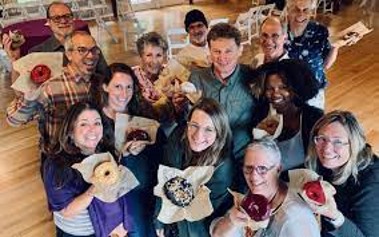
How did you get interested in the educational facility design profession?
It started as I went to grad school as a mature student. My path of study was to augment my health care and workplace background with interior design and environment behavior psychology. When I started to see all the work by environment behavioral science, I realized this information needs to be in the hands of designers. We are the ones who can make a difference and actualize this research. For me a driving force for anything I do is to get research off the shelf.
My first higher ed posting was at Virginia Tech and the provost knew I was teaching design students to understand how to actually map human behaviors and see those behaviors in the designed environment. So she asked me to co-lead a project to develop standards for all the instructional spaces on campus. There were no standards, no LEED, etc. I didn’t know at the time that I was a pioneering this kind of solution in this space. We have to be able to see in order to learn; we have to be able to hear to learn. I came to see that these were not instructional spaces, these were learning spaces. The whole reason for an institution’s being is the help people learn so we changed the language from teaching and learning to learning and teaching. That has been my North Star ever since and iI believe f you can make a little bit of difference along the way you feel as if you have accomplished something. I’ve been at this for over 25 years, and we still have a long way to go.
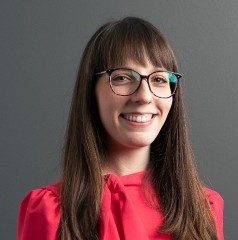
“I met Dr. Lennie at a time in my life and career when I needed guidance from someone who could really understand what it takes to carve your own path and could be open enough to share the wisdom of their own experience,” says Chloe Hosid, a Specialist in Education Design Research at Corgan. “When I saw Dr. Lennie speak at a conference, I could feel the genuine warmth and passion she brings to her work, and after quite literally following her from one presentation to the next, I had the chance to talk with her about her path in this industry, her research, and her life, and we connected in a way that made me feel seen, inspired, and gave me the confidence that I really needed to grow. Dr. Lennie’s encouragement and support has had an immeasurable impact on my career, and I am deeply honored by and grateful for her mentorship.“
Who did you consider an early mentor, and how did they change the course of your career?
Opportunities given to me by Dr. Peggy Meszaros, Senior Vice President and Provost at Virginia Tech, allowed me to move from the healthcare to education. She was very open and cared about how we develop program standards that are still in place today. Dr. Meszaros was very forward thinking and cared about how we developed design standards for this institution. Her vision for what education could be was what captured me. We developed program standards still in place today.
My former manager at Steelcase Learning, Sean Corcorran called me a ‘unicorn’. Why? Because I was the only person he knew of who had actually had lived experiences for nearly every side of the learning environment equation: ‘professional student’, educator, researcher of education places. I taught an education design studio, led faculty as chair of design schools, and was a professional designer specializing in education design.
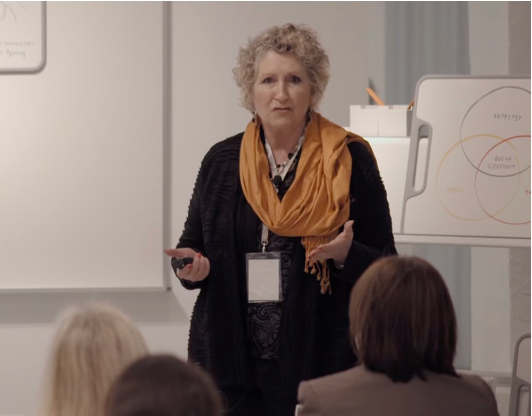
Why is research so critical when planning ed spaces?
Because we know too much. We know so much more across many domains, about neuroscience, and about how learning happens. Brains work differently and to be insensitive to the different needs of learners and how brains work is irresponsible. It is unconscionable to carry on as we have in the past. We need to change the way we think and find a better way. If you look at research and make it applicable — take it off the shelf — it can impact every decision that you make.
In the design community, you are the maestro, and you need to lead all these different musicians. If you want to get through the musical piece you have to understand the notes. We can make it beautiful. We are so stuck in our methodology and the way we “do learning” that it’s a real challenge. Research can help the education community understand the why better. And if it has been vetted by multiple sources then the movement becomes more accepting. It’s a great bridge between the domains of design and education.
If you look at research and make it applicable — take it off the shelf — it can impact every decision that you make.
I want the ECLPS program to aspire to be that bridge between the two domains of education and design, giving courage to the new thought leaders of this generation in education and design to lead the discussion on a better way.
What do you like best about working in the educational facilities profession?
The variety and texture – the people – there are so many facets to connect how we work and learn. Looking at it from the design perspective, from the learner student, the learner teacher. There are so many ways to get involved in the education space. All have different mindsets and ways to get involved in working with an education vertical. Nothing is ever dull, and every client is unique. What you can bring to the table is so different and provocative I like to scare the pants off people if I can.
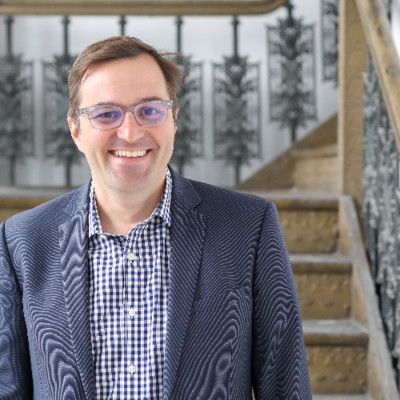
“I’ve known Lennie for most of my career, she is a constant source of inspiration,” says Dave Broz, Visiting Professor of Interior Architecture at Columbia College. “Her unstoppable dedication to learning environment enhancements is unparalleled in the industry, whether it’s guiding the pedagogical theory at an institution, leading research on producing learning environment furniture that enhances learning for all or teaching a diverse cohort about the connection the science of learning and the realities of the physical space it is taught in. For as long as I’ve known Lennie, she knows that we can do better, she demonstrates that we must do better and thousands of students across the globe are doing better because of her vision, dedication and commitment to learning enhancements.”
What are you most proud of?

I’ve worked really hard to get research into practice and am incredibly proud of ECLPS for my legacy of learning. I feel being the ECLPS Program Director is a way for me to share a life experience in the hope that others may benefit. My career focus [my ‘North Star’] has been on reimagining the way we ‘do education’; designing for it, learning and teaching in it, and the kinds of curricula we deliver. We know design matters and how it impacts learning and teaching. I hope when people receive their certification, it will be something they will be incredibly proud of and they will go forth as new leaders for change.
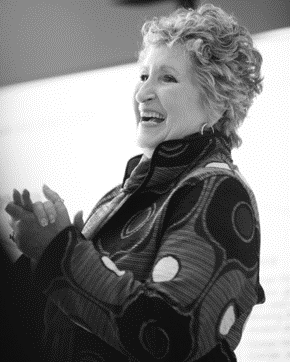
Why is the ECLPS program so important to you?
I have devoted my 25+ years of my professional life to helping facilities designers and the educators change from an efficiency model to an efficacy model using research, design, and all we know about all these domains. We need to change the question about purchasing decisions from ‘which chair do you like?’ to ‘how will this affordance help you in the context of how you want your students to learn?’ That is the better question and one driven by the pedagogical model. This is the point of view I have used in developing the ECLPS curriculum. Until we find a way to come together and fill the holes, we are just going to be a group of different instruments and we are not playing the same tune. The reason the ECLPS program is different is it embraces the application of research to make the opportunities for our learning truly future focused.
Why is ECLPS important to industry?
If I look at this industry holistically, we are too segmented. To design for learning we need to come at it from a learning perspective. We need to understand the pedagogy and how it will be used. Students and teachers will live in the space for 60 years. These buildings are rigid, fixed, and expensive. We can’t afford to continue to get it wrong. The ECLPS program provides not only the science behind the decisions, but these voices of experience and what they have learned from those experiences. Participants will hear from top researchers from around the world and learn how to apply the research to actually realize forward-focused visions. If we don’t learn from these experiences and research, then shame on us.
Although I think we educators have been part of the resistance to change, we are also the catalyst for moving change forward. The professional development programs that link learning to new designs will be key to successful future for our students. We need to work from the inside out. Reverse the thinking. These are the tools of our our trade as educators. How do we make it learner-centric, learners as both students and teachers. We need to make teachers’ lives easier to allow them to be a facilitator of learning. Finding a better way for our kids’ future, that’s my driving force.
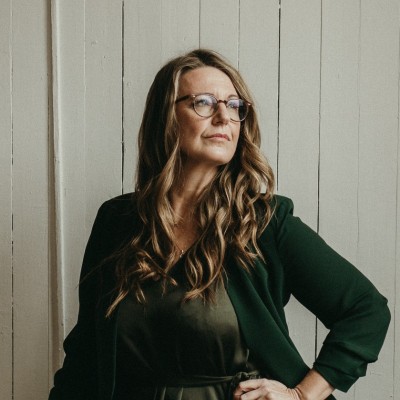
“Dr Lennie left her mark on me when we met many years ago,” says Bridgitte Alomes, CEO at Natural Pod. “She is a wonderful human doing great work in the world. She is so passionate about creating better outcomes for students through education design, and she’s inspired me on my own journey to build better learning spaces.”
What do you see as the most important trends impacting the future of educational spaces?
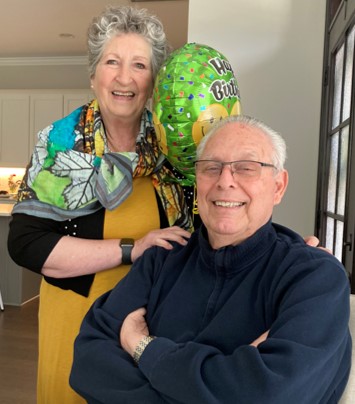
The biggest result of the pandemic was the connection to blended learning, AI, technological influences, and new ways to deliver content online and in person. I see no more lecture halls in our future. It goes back to not using the efficiency, but embracing the efficacy model. Use the space for doing, not listening to a lecture. Moving learning to a hybrid, Hyflex environment that is an enriched experience for both those onsite and remote is a challenge not yet solved.
What advice would you give others wanting to make a difference in education?
I think when you show up, you have to care. You must be willing to listen and not predict what you are going to hear, to truly listen. What I have found is that in every instance, there are incredibly caring educators who will go beyond measure to improve the learning for their students. We need to help them find their way for their students’ future.

